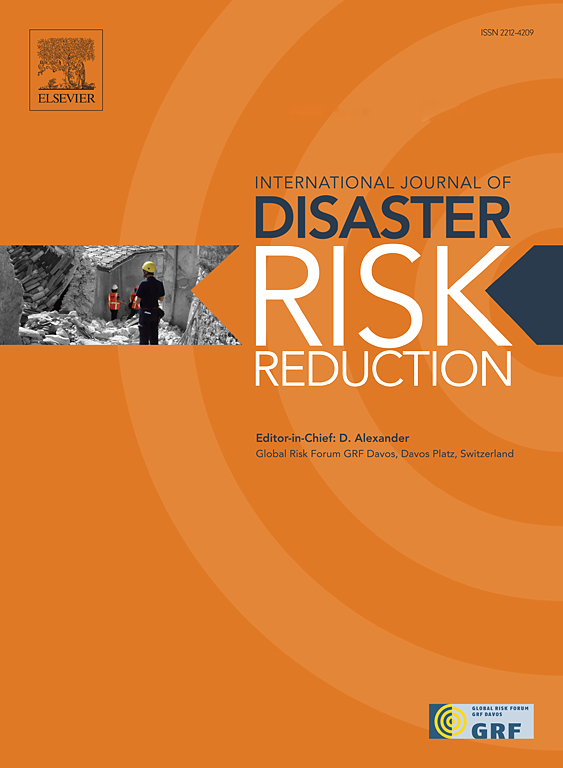Scale-dependent exposure bias: Assessing disaster risk in less economically developed regions
IF 4.2
1区 地球科学
Q1 GEOSCIENCES, MULTIDISCIPLINARY
International journal of disaster risk reduction
Pub Date : 2025-03-17
DOI:10.1016/j.ijdrr.2025.105406
引用次数: 0
Abstract
Natural hazards disproportionately affect different regions and social demographics, leading to spatial inequality in disaster exposure. Current assessments of spatial inequality in disaster risks are shaped by the identification of hazard-bearing bodies and risk zoning methods, which are heavily influenced by scale selection and classification approaches. This study investigates the effects of these factors on identifying vulnerable populations in Less Economically Developed Regions(LEDRs), analyzing the correlation between LEDRs exposure and multiple natural hazards, including earthquakes, floods, landslides, and droughts, across provincial, urban-rural, and municipal scales. Using spatial analysis techniques, the exposure of LEDRs to individual hazards and the integrated disaster risk of Sichuan Province was calculated. The vulnerability of impoverished populations in hazard-prone areas is quantified using the Less Economically Developed Regions Exposure Bias (LEDR-EB) index. The findings indicate that: (1) Different risk classification methods significantly influence the delineation of high-risk zones, particularly for impoverished populations; (2) The LEDR-EB index varies across spatial scales. At broader scales (provincial and urban-rural levels), the exposure bias is not uniform, with urban LEDRs exhibiting a 0.24 higher compared to rural areas, indicating greater disaster exposure for impoverished urban populations. At the municipal scale, the variation in the LEDR-EB index is more obvious and shows a significant influence from the risk classification levels. This study contributes to understanding the critical role of spatial scale and hazard risk zoning in assessing disaster exposure in LEDRs, providing insights necessary for the development of equitable disaster risk reduction policies aimed at mitigating vulnerability among impoverished populations.
求助全文
约1分钟内获得全文
求助全文
来源期刊

International journal of disaster risk reduction
GEOSCIENCES, MULTIDISCIPLINARYMETEOROLOGY-METEOROLOGY & ATMOSPHERIC SCIENCES
CiteScore
8.70
自引率
18.00%
发文量
688
审稿时长
79 days
期刊介绍:
The International Journal of Disaster Risk Reduction (IJDRR) is the journal for researchers, policymakers and practitioners across diverse disciplines: earth sciences and their implications; environmental sciences; engineering; urban studies; geography; and the social sciences. IJDRR publishes fundamental and applied research, critical reviews, policy papers and case studies with a particular focus on multi-disciplinary research that aims to reduce the impact of natural, technological, social and intentional disasters. IJDRR stimulates exchange of ideas and knowledge transfer on disaster research, mitigation, adaptation, prevention and risk reduction at all geographical scales: local, national and international.
Key topics:-
-multifaceted disaster and cascading disasters
-the development of disaster risk reduction strategies and techniques
-discussion and development of effective warning and educational systems for risk management at all levels
-disasters associated with climate change
-vulnerability analysis and vulnerability trends
-emerging risks
-resilience against disasters.
The journal particularly encourages papers that approach risk from a multi-disciplinary perspective.
 求助内容:
求助内容: 应助结果提醒方式:
应助结果提醒方式:


